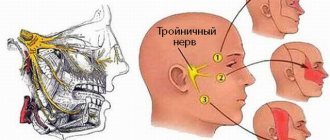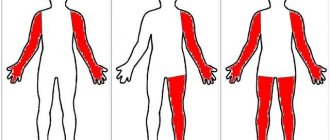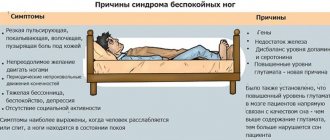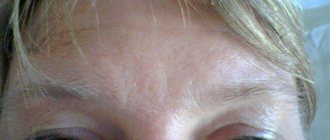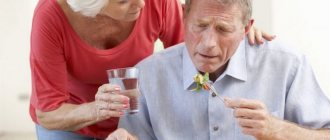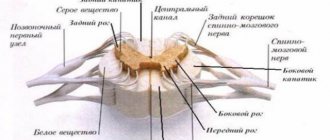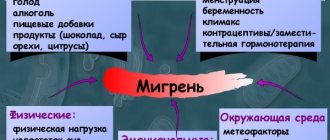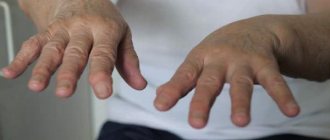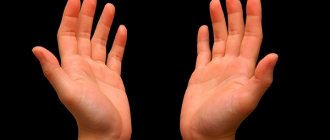What are the causes of contractions in children and adolescents
Often, this phenomenon in this category is not a sign of serious pathologies, but still, contacting a doctor would not be amiss: this will help to find out why the child periodically experiences muscle twitching.
Experts attribute the appearance of such an anomaly to several factors. The most common is genetic predisposition. In addition, numerous studies have found that girls suffer from muscle twitching much less often than boys, while in the latter it occurs in a more severe form.
Quite often, muscle twitching occurs after:
- stress;
- past illness;
- a large number of unpleasant procedures (injections, hospital stay).
And yet, one of the particular factors in the appearance of this phenomenon is the “unhealthy” atmosphere in the family, which has an extremely negative effect on the child’s nervous system.
To correct this condition, it is recommended to exclude provoking causes, begin to follow a diet and sleep schedule, and normalize physical activity. Family psychotherapy can also be used.
Why does involuntary twitching of the muscles of the arms and legs occur?
Considering that the muscles of these parts of the body are most involved in everyday life, their twitching can be caused not only by psycho-emotional, but also by strong physical stress. For example, after a long workout with weights, a phenomenon such as twitching of the muscles of the arms and legs may be observed. As a rule, such phenomena go away on their own within a few days. However, if the twitching continues for a long time, you should definitely consult a doctor, first of all, a therapist, who will determine the need to consult a neurologist, psychologist or neurosurgeon.
Causes of muscle contractions in adults
In adults, muscles twitch much more often. So there is a certain number of nervous diseases that contribute to this, namely:
- amyotrophy;
- disc irritation with hernia;
- multiple sclerosis;
- Isaac's syndrome;
- hemifacial or facial hemispasm;
- suffered a stroke;
- tumors of the brain stem;
- formations in the brain;
- late consequences of poliomyelitis;
- overdose of antibiotics;
- bites of poisonous insects, snakes;
- Azorean disease;
- increased nervous excitability.
All of the listed conditions in medicine are united by the term “motor neuron disease.”
Nervous tic
Nervous tic
- This is a muscle contraction that is arrhythmic and involuntary.
It can be temporary or permanent. The temporary effect can be caused by strong feelings, fear or a pinched nerve. And a permanent tic is formed due to a lack of microelements after illnesses. Types of nervous tics and hyperkinesis:
- Grinding of teeth. - Twitching of the wings of the nose. - Brief twitching of the muscles of the limbs. - Shaking head. — Nervous tic from hyperkinesis in sleep.
Teak is also divided depending on location:
— Local tic manifests itself in the contraction of one muscle group. - A generalized tic combines the simultaneous contraction of several groups at once, and at the same time they begin and stop simultaneously.
Associated symptoms of pathology
Muscle twitching differs from each other depending on the nature of its origin. Benign twitching of muscles throughout the body may be repeated frequently, but this does not in any way affect the strength of the muscles and sensitivity in them. Twitching usually differs in rhythmicity and occurs in the following groups:
- if they are painful, they are called “krampi”. They may also be accompanied by limitation of movements, swelling and numbness;
- If the facial muscles twitch on one side, this is due to damage to the brain stem. Such fasciculations are undulating and require careful medical examination.
The same process in Isaacs syndrome begins with the hand and foot, and then gradually rises to the torso, which fetters the person completely.
Twitching of the facial muscles develops after paralysis of the facial nerve and is invisible at first glance.
When overdosing on medications or poisonous insect bites, intoxication comes to the fore, and twitching ends after the poison is removed from the body.
Instrumental methods for diagnosing ALS
During the diagnosis, your doctor will check your tendon reflexes and ask about your medical history and stress levels. Most diagnostic tests are aimed at ruling out other more serious diseases, such as multiple sclerosis or amyotrophic lateral sclerosis. If the doctor thinks a person has a serious condition, they will order blood tests and electromyography (EMG) to rule out nerve damage.
Instrumental diagnostic methods are designed to exclude diseases that are potentially curable or have a benign prognosis.
Electromyography for diagnosing ALS
There are two methods for diagnosing ALS:
- Electromyography (EMG) - verification of the generalized nature of the process
- Magnetic resonance imaging (MRI) of the brain and spinal cord to exclude focal lesions of the central nervous system, the clinical manifestations of which are similar to those of the onset of MND
Diagnostic measures
It is almost impossible to independently identify the reasons when a muscle twitches on the leg or a muscle twitches on the arm.
The appearance of symptoms in some cases can be associated with lifestyle changes and the negative effects of provoking factors. This occurs under certain physiological conditions. In such cases, assistance and the use of additional diagnostic methods are required. This is especially often used in cases where the hand twitches.
Initially, when conducting a diagnosis, you should conduct a conversation with the patient, find out the main complaints, study the medical history and the presence of previously identified pathologies. An external examination and assessment of reflexes are carried out.
If there is a suspicion of organic damage to the nervous system and to identify the source of the lesion, the following additional methods are most often used:
- radiography;
- CT;
- electroneuromyography;
- electroencephalography;
- all methods of neuroimaging.
These methods determine the functioning of nerve cells and the transmission of impulses to muscles in various parts of the limbs.
A muscle in the back twitches involuntarily when at rest
Another common and very unpleasant situation occurs when a muscle in the back twitches, and it is impossible to stop this process on your own. This usually affects people who are actively involved in sports and weightlifting. In the process of excessive physical stress, large muscle structures receive multidirectional nerve impulses and a mismatch in their interaction may occur.
This is a rather dangerous condition, since it is often the cause of the trigger point of myofascial pain syndrome. This is a bundle of muscle fibers that have become out of step with the general rhythm and have lost the ability to relax on their own.
Therefore, if a muscle twitches involuntarily, consult a doctor in a timely manner. With the help of manual therapy and osteopathy, you can prevent the development of a serious illness, which, due to severe pain, can interfere with any training in the gym.
Sometimes muscles twitch at rest and with other diseases of the musculoskeletal system:
- osteochondrosis of the lumbar and thoracic region with radicular syndrome in the stage of partial remission;
- intercostal neuralgia;
- deforming spondyloarthrosis and uncovertebral arthrosis;
- intervertebral disc protrusion;
- displacement and rotation of the vertebral body during sprain of the ligamentous apparatus.
Only an experienced doctor can make an accurate diagnosis. You should not try to take any measures on your own, for example, rubbing the place where you feel muscle twitching. As you already understood, the focus of pathological changes may be located in a completely different place, such as where the path of innervation of a given muscle passes. And only a doctor can figure this out. So don’t waste time, sign up for a free consultation with a doctor at our manual therapy clinic. The first appointment is completely free.
Treatment of non-pathological muscle spasms
The choice of appropriate therapy is carried out on the basis of the cause and department of occurrence of the disease identified during the diagnosis. Most often:
- a muscle in the arm twitches;
- twitching of the leg muscles occurs;
- a muscle in my shoulder twitches.
Therapy is carried out after consultation with a doctor. Self-medication can lead to a general deterioration in health, progression of the disease and the development of a threat to health and life. The same applies to cases where muscles twitch throughout the body. .
In case of emotional stress, it is important to consult a psychologist in a timely manner.
Pharmacy drugs
There is no single method for treating involuntary contractions of the muscles of the leg, arm, shoulder, since the factors for their appearance are different. It is necessary to treat the underlying disease in which this condition appears, in particular the following drugs are used:
- for compression of the nerve root - decongestants, vascular anti-inflammatory and painkillers;
- for the treatment of Isaac's syndrome - blood purification and high doses of hormones;
- intoxication – plasmapheresis, massive infusions, pressure chamber;
- in case of toxic effects - antidotes, symptomatic drugs.
Surgical methods are aimed at removing the tumor near the spinal cord or brain, after which radiation or chemotherapy is used. For incurable patients, medications are selected that can reduce the severity of symptoms and improve overall well-being.
Exercise therapy and massage
Also, in addition to medications, it is necessary to include in everyday use other methods aimed at preventing complications. Among them:
- leg muscle gymnastics;
- exercises for the upper limbs;
- massage (especially effective in cases of facial paralysis).
Professional advice is required before using any of these methods.
Diet for illness
For physiological causes of the disease, it is necessary to adjust the daily diet, which will contain the required amount of vitamins, microelements, and protein foods. Important: the daily water consumption rate for an adult is up to 2000 ml.
A common cause of twitching is magnesium deficiency, and its deficiency leads to an imbalance of calcium and glycine. Eating the following will help restore their supply in the body:
- nuts;
- fruits, berries;
- red fish;
- beets;
- parsley, dill;
- Luke;
- soy;
- buckwheat porridge.
Among other things, you should stop drinking cola, coffee, energy drinks, alcohol, and smoking.
Traditional methods to help
Along with traditional methods of treating this pathology, traditional medicine methods are actively used.
Compresses and lotions:
- with geranium leaves: chop green leaves, apply to the affected area, cover with a cloth, wrap tightly. Keep for an hour. In the initial stages, the twitching goes away after the 3rd session;
- honey lotions: 0.5 tbsp. warm water dissolve 1 tsp. fresh honey. Absorb the liquid with a cotton pad or bandage and apply to the problem area until it cools. Use twice a day until the problem disappears completely.
Herbal teas (infusions):
- infuse watch leaves, blueberries and mint, strawberries in a ratio of 4:3:2. Take before bedtime;
- 3 parts of chamomile flowers, 2 parts of mint and lemon balm leaves, 1 part of valerian root, pour boiling water and leave for 10 minutes. Drink one glass on an empty stomach in the morning and in the evening;
- mix heather leaves, dried herbs, thyme, valerian root, chicory in an amount of 2:2:1. Pour boiling water over one tablespoon and leave for half an hour. Strain the finished mixture and consume 150 ml up to three times a day.
Before using traditional methods of treatment, consultation with a doctor is required.
Why do spontaneous leg tremors occur during sleep?
As you know, brain activity does not stop during sleep. Spontaneous muscle twitching during sleep even received a scientific name - Simmonds' nocturnal myoclonus. Such shudders do not pose any danger to human health; they are directly related to brain activity during sleep. If involuntary shaking of the legs leads to awakening, then we may be talking about Okbom's restless legs syndrome. The main reason why these syndromes arise is neuroses and improper functioning of the subcortical part of the brain. In order to determine what causes such twitching, it is necessary to study the functioning of the blood vessels, as well as the psychological state of the patient. After identifying the cause, we can talk about prescribing treatment. This may include:
– taking sedative and epileptic drugs;
– rest and lack of psychological stress may be indicated;
– massage and muscle relaxation;
– following a diet and taking vitamins.
Consequences and complications of convulsive conditions
Based on the studied general and individual causes of muscle twitching, possible complications can be identified:
- developmental defects, metabolic disorders in children under 2 years of age; idiopathic epilepsy – children from 2 to 14 years;
- tumors, strokes, attacks of loss of consciousness, long-term treatment with anticonvulsants - in adults.
Also a significant consequence is surgical intervention, which is prescribed in cases where anticonvulsants do not control the frequency of seizures.

